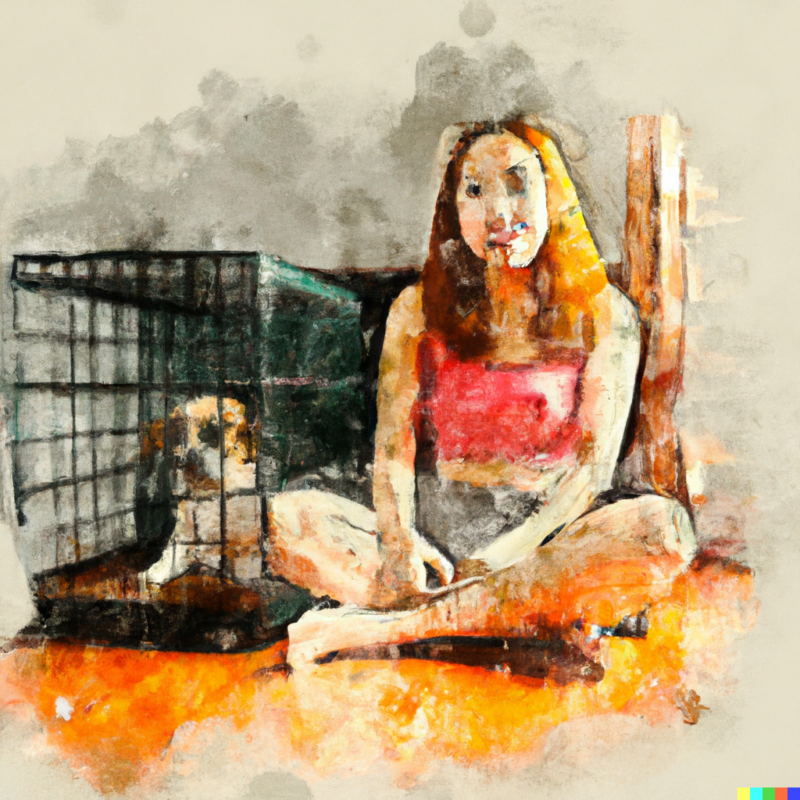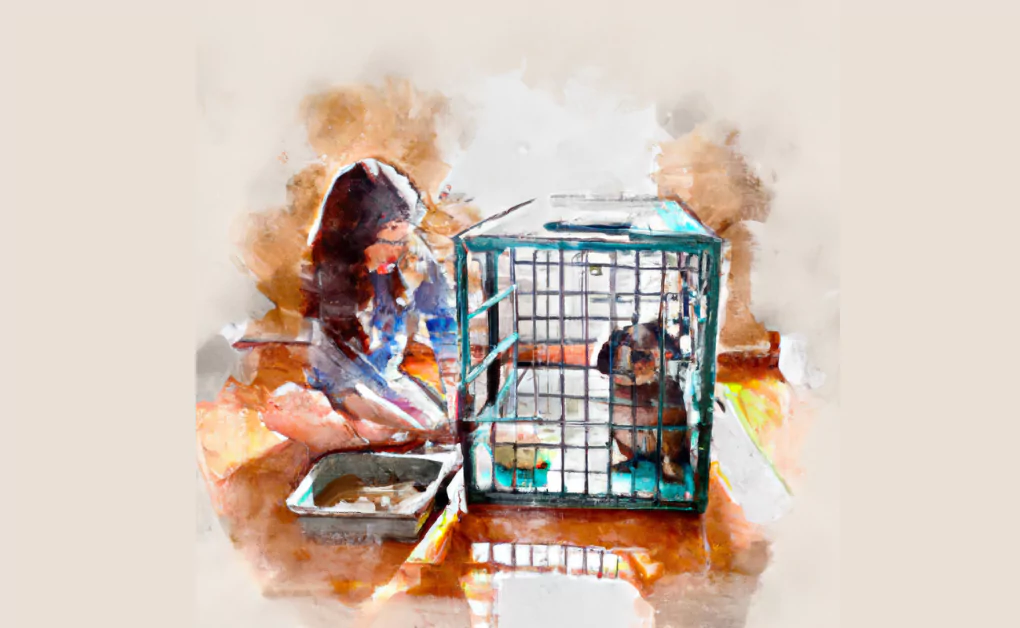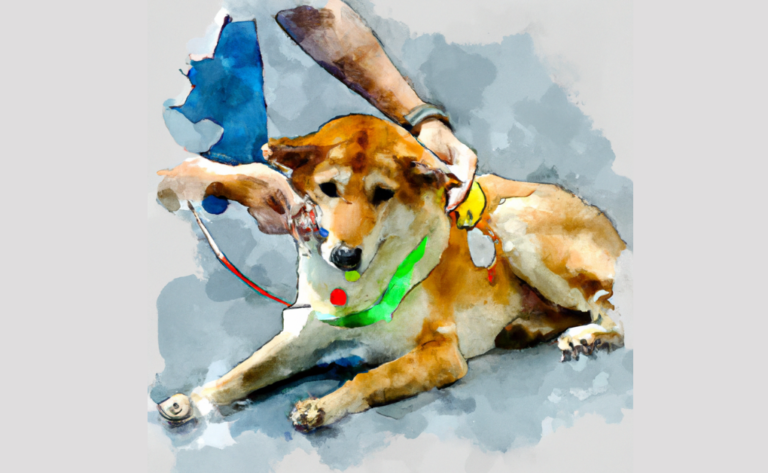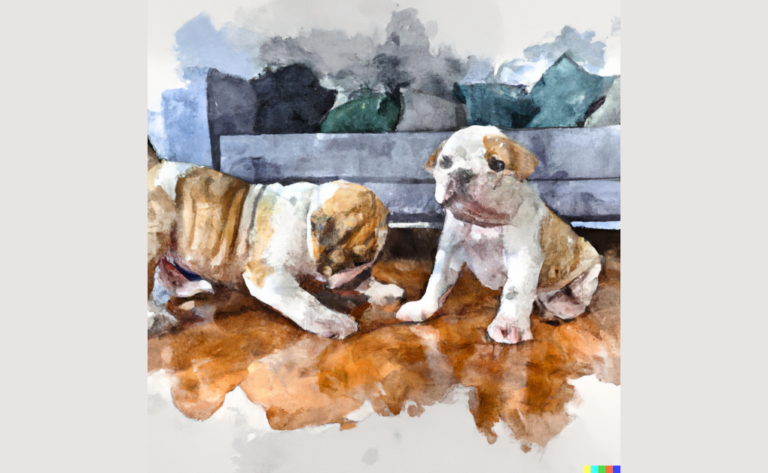Importance of Crating your Dog: An Owner’s Perspective
Introduction
When Sarah adopted her energetic Labrador Retriever, Luna, she never imagined that crate training would become a topic of discussion among her friends and family. As she searched for ways to help Luna settle into her new home and establish a sense of security, she stumbled upon the concept of crating.
Have you ever seen a tiny puppy tearing through the house and wondered, “Is it that hard to keep control of your little one?”. You may think having your pet crated is cruel, but crate training has many benefits.
Crating your dog is an invaluable tool that yields long-term peace of mind for owners and provides a safe environment for puppies and adults. It also allows you to travel confidently, knowing your pup won’t escape or cause chaos in the car or hotel.
What Is A Dog Crate?
A dog crate is an enclosed space used to house your pup. It is a den-like place for your four-legged companion to find comfort and can be a recurring place where they sleep and relax. Like a bedroom for humans, the crate gives your pup a safe, familiar area that can help relieve stress and anxiety in an otherwise unfamiliar environment.
A dog crate is an essential tool for any pet owner. It gives your dog a safe and secure environment while also helping to prevent destructive behavior. The dog should be able to stand, lie down, and rotate around in the crate comfortably, and this will ensure that your pup has plenty of room to move around without feeling cramped or uncomfortable.
Additionally, the crate serves as a bed and sanctuary when no one is around to supervise him.
Using a dog crate can also make travel much safer and easier for you and your pup. Having a designated space for them to stay in during car rides or plane trips, you can rest assured that they are safe and secure.
Additionally, it can help with house training by providing a consistent place where your pup knows they should go when they need to relieve themselves. Finally, a dog crate is invaluable for every pet owner to consider investing in.
What is the Importance of Crate-Training Dogs?

Crate training is an integral part of developing a well-behaved dog. It provides a safe space for your pup to retreat in stressful situations and helps with toilet training. Crate training can also confine your dog when necessary without stressing them out. Free roaming should be earned through permission-based training and establishing good behavior.
Crate training is an effective and accepted tool to shape desirable behaviors and soothe anxious dogs. It can benefit dogs and owners, providing a safe space for the owner and peace of mind. For example, crate training can help reduce separation anxiety, prevent destructive behavior, aid in potty training, make boarding facilities more comfortable for a dog, make flying with a pet less stressful, provide a secure and safe environment for dogs, restrict movement if the dog is injured, and allow dogs to heal in a comfortable environment.
1. Provides A Safe Space For Your Dog
A crate is an essential item for any dog owner. It provides a safe and secure environment for your pup to relax and rest away from the hustle and bustle of everyday life. Equip the crate with a comfortable bed, safe toys, and a water bottle or bowl, so your pup has everything they need in its own little space. A box can also become a comforting space for your dog when they need alone or want to nap.
Crating your dog when visitors are around can be a good idea to prevent them from jumping up, escaping, barking, or stress-peeing. The crate keeps your pup separate from visitors who may not like dogs or have allergies. The box may be opened and the dog released once the dog has calmed after visitors arrive. This way, you can ensure that everyone is comfortable and safe in your home. With proper use of a crate, you can create an environment where both you and your pup feel secure and happy
2. Reduces Separation Anxiety
Separation anxiety becomes a problem for some dogs when they are alone for long periods. This type of anxious behavior could manifest as excessive barking, chewing on furniture, or trying to escape their crate – which can be dangerous.
Crate training your dog can have substantial benefits, such as reducing separation anxiety when you’re away. Dogs typically don’t like to be left alone for extended periods, and being confined in a crate can help them feel more secure. In addition, it’ll reduce their stress since they won’t worry about other animals or people coming into the house while you’re gone. A crate will create an environment that makes your pup feel safe, and you can even add toys or blankets to make it extra comfy.
3. Prevent Destructive Behavior
In addition to relieving their separation anxiety, crating your pup can help manage destructive behaviors. This is especially helpful if you own an active breed or a puppy who hasn’t quite mastered how not to chew on furniture! Keeping them in a crate limits access to anything they may choose to destructively chew on while you’re busy at work or running errands.
Crate training also provides invaluable structure and consistency for puppies who are still learning what behaviors are unacceptable. Suppose your pup has gotten into the habit of chewing on table legs or rugs, for example. In that case, crate training can help discourage these unwanted behaviors by removing their access to tempting objects whenever necessary and reinforcing acceptable alternatives like chewing toys.
4. Helps Establish A Routine For Your Dog
Having a crate can be an invaluable tool for establishing a routine for your dog. Dogs benefit from having a regular schedule and will often go to their chest when they know it’s time for bed or when their owner is leaving. In addition, dogs may deal with behavioral problems such as separation anxiety by spending time in the crate daily. A routine helps them feel more secure and less anxious, making them better behaved overall.
Crating is also sometimes necessary for veterinary visits, grooming, and travel. Preparing your dog to be comfortable in a crate can reduce stress when crating is required. In addition, airlines typically require dogs to board planes in approved travel crates, so it’s essential to get your pup used to being in one before any trips you may have planned. With patience and consistency, you can help your dog become comfortable with their crate and establish a healthy routine that will benefit both of you!
5. Help With Potty Training

Crate training is an essential part of potty training a puppy. It helps the pup learn proper den behavior and become house-trained. The right-sized crate should be used for potty training, providing a secure and cozy place for the puppy to relax and sleep. Proper crate introduction is essential to avoid your dog becoming scared of its crate. Taking the time to properly potty train a puppy is vitally necessary for owners and dogs. It allows everyday routines to be enjoyed without any accidents or destructive behavior.
When implementing crate training, it is essential to choose the right size and type of crate for your pup’s comfort. This will help them feel safe and secure in their new environment. Once they are comfortable with their box, you can begin teaching them when it is appropriate to go outside for potty breaks. With patience and consistency, your pup will soon understand that they need to go outside when they need to use the bathroom. Crate training should be
How to Crate Train Your Dog?
Using only positive reward-based training methods is essential when crate training your dog. First, choose a decent, sturdy crate that will allow your dog to stand up, stretch, lie down, and rotate around inside.
Introduce your dog to the crate by placing treats or their favorite toy/s around them inside it. Sit near the box for a few minutes, then leave and return. Repeat this process until your pup is comfortable with the crate and can stay in it for extended periods. Once your dog is pleased with the box, start feeding them in it, providing positive reinforcement for returning to the spot. As they build trust with their new sanctuary, reward them often when entering their crate and leaving it.
Gradually add duration between placing them in the crate and giving praise upon exit until you reach a point where your pup can comfortably stay in there without fussing. Providing them with plenty of exercise and potty breaks is also essential. At the same time, they are created, ensuring that they aren’t forced into an uncomfortable situation due to boredom or lack of activity.
Finally, provide persistent consistency during this process. Consider using phrases like “crate” or “kennel” when asking your pet to enter the area, eventually connecting these cues with positive reinforcement like treats or verbal praise that will remind them of how safe and secure they feel while secured in this space.
When to Not Crate a Dog
Crating a dog can effectively provide them with a safe and comfortable space, but sometimes it should not be used. For example, dogs should not be created if they have separation anxiety or claustrophobia, as this could cause further distress.
Crating must never be used as punishment – it should only have positive associations. Puppies can sleep in a crate overnight but should only be left in the container for 6 hours during the day. Maximum daily time recommended in a box varies by age; 8-10 weeks (30-60 minutes), 11-14 weeks (1-3 hours), 15-16 weeks (3-4 hours), 17+ weeks (4-5 hours).
Dogs should also not be left in the crate for extended periods while their owners are away; instead, a mixture of doggie daycare and staying home is recommended.
It is important to remember that creating is meant to provide a safe and comfortable space for your dog, not a form of punishment. With the proper introduction and training, crate time can be an enjoyable experience for you and your pup.
Frequently Asked Questions
Disclaimer: The information provided on this veterinary website is intended for general educational purposes only and should not be considered as a substitute for professional veterinary advice, diagnosis, or treatment. Always consult a licensed veterinarian for any concerns or questions regarding the health and well-being of your pet. This website does not claim to cover every possible situation or provide exhaustive knowledge on the subjects presented. The owners and contributors of this website are not responsible for any harm or loss that may result from the use or misuse of the information provided herein.






